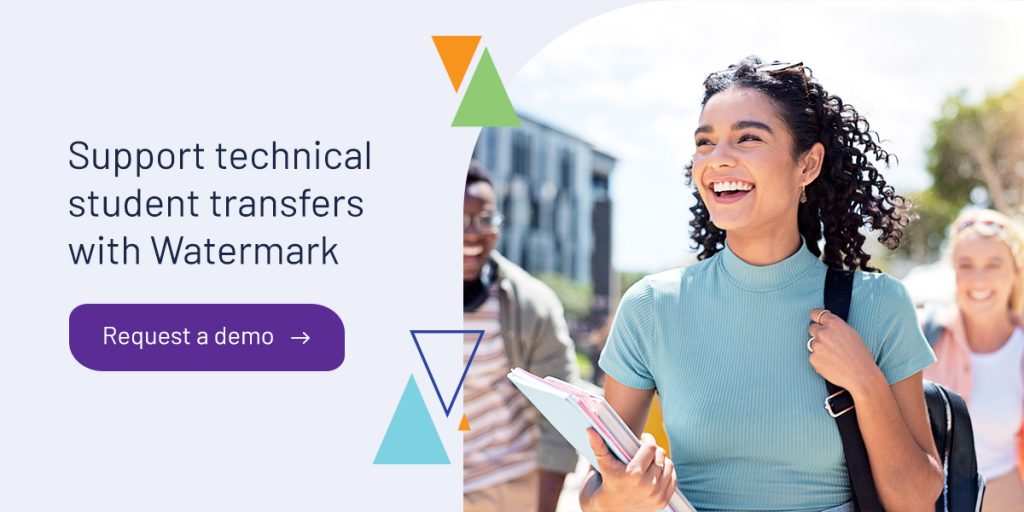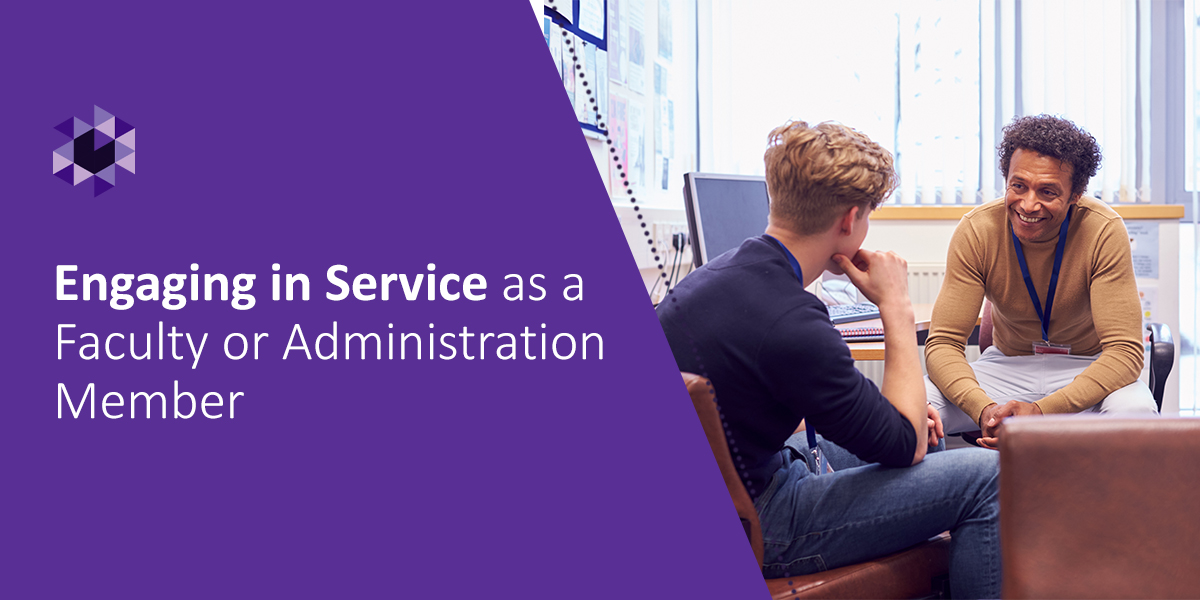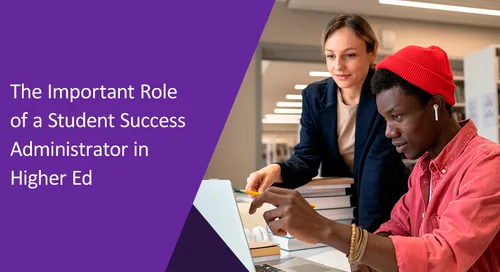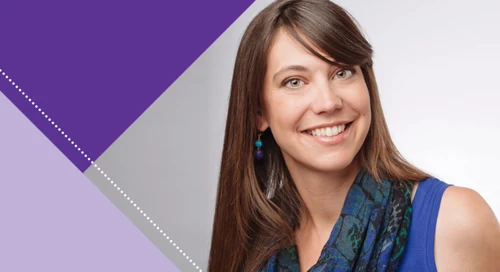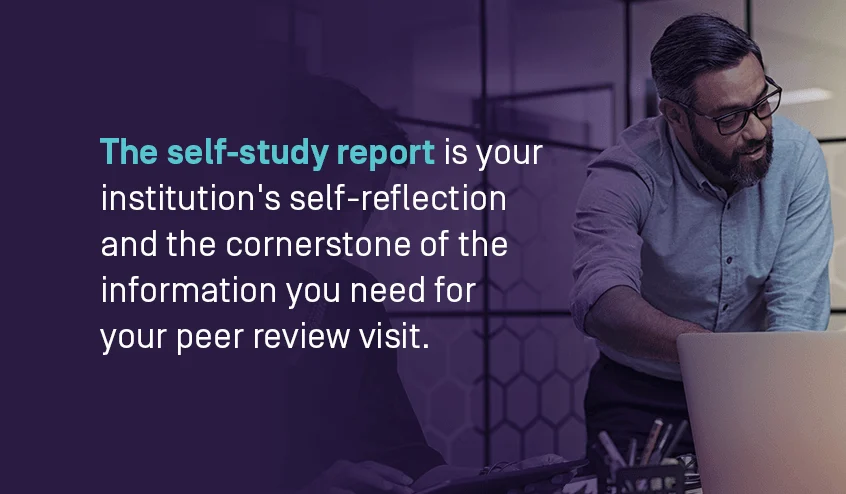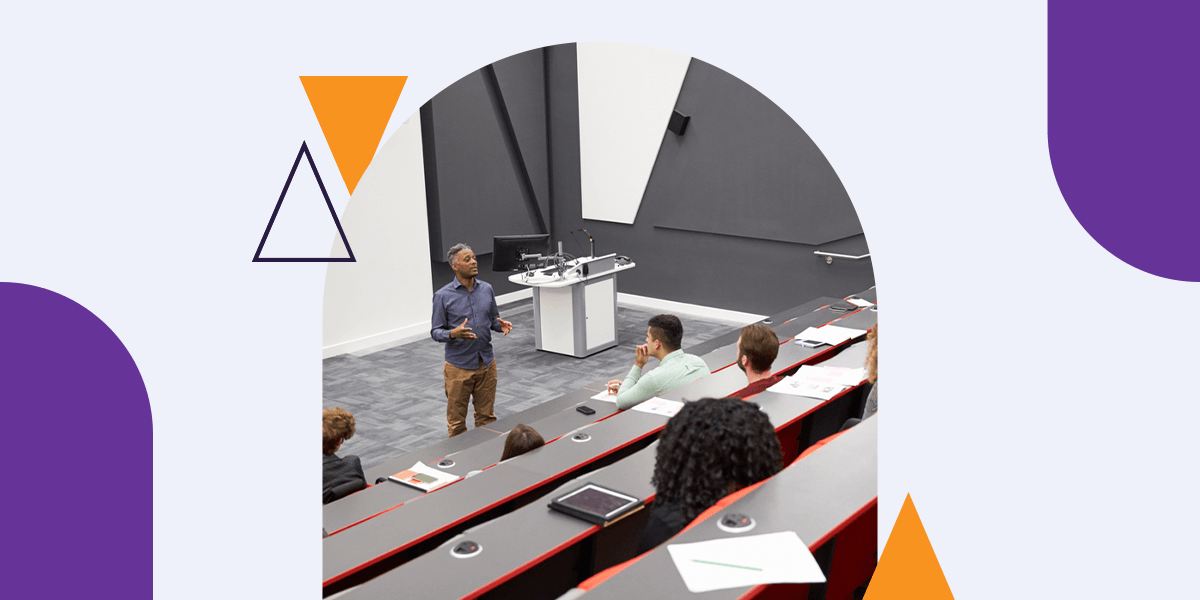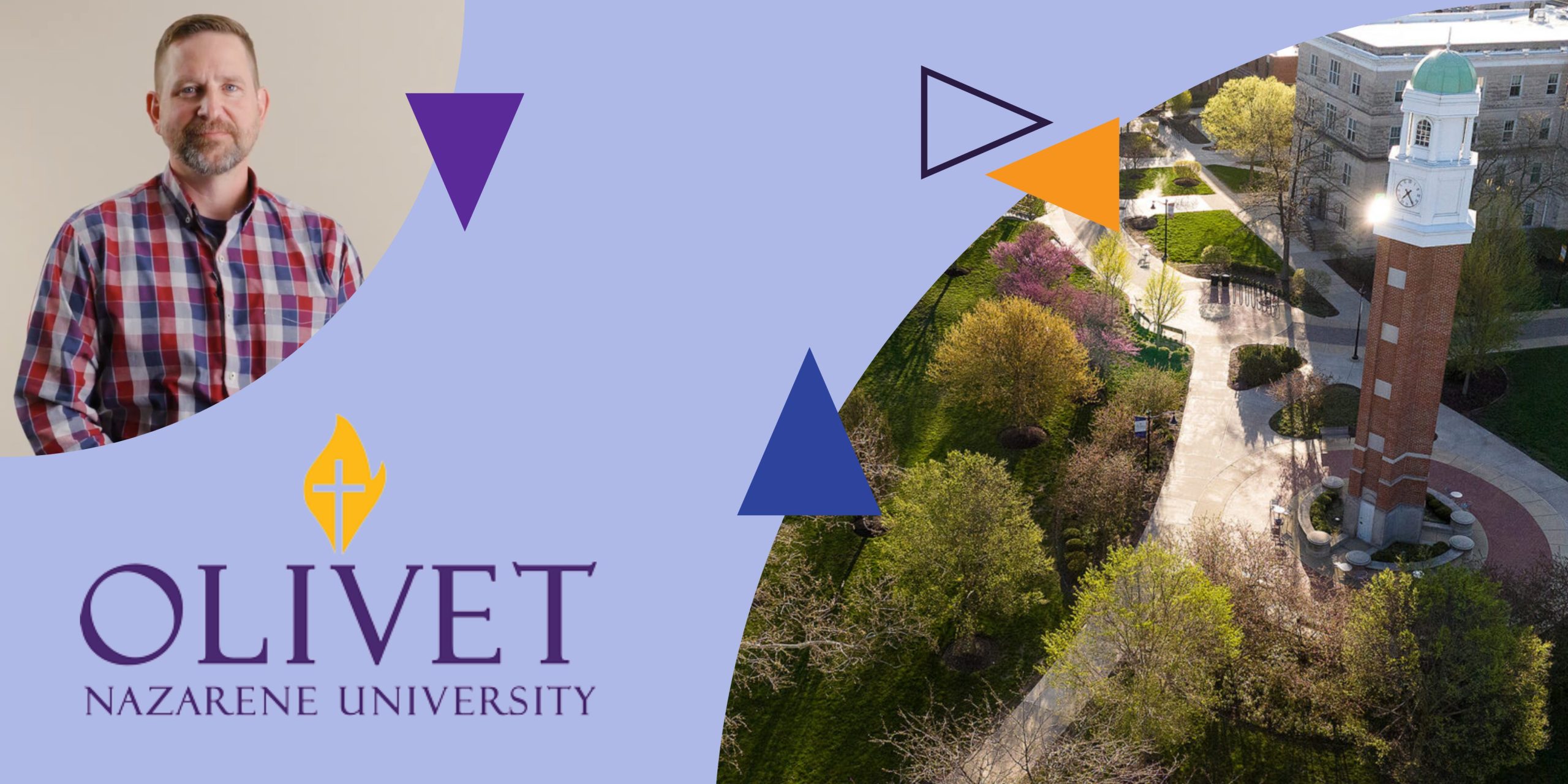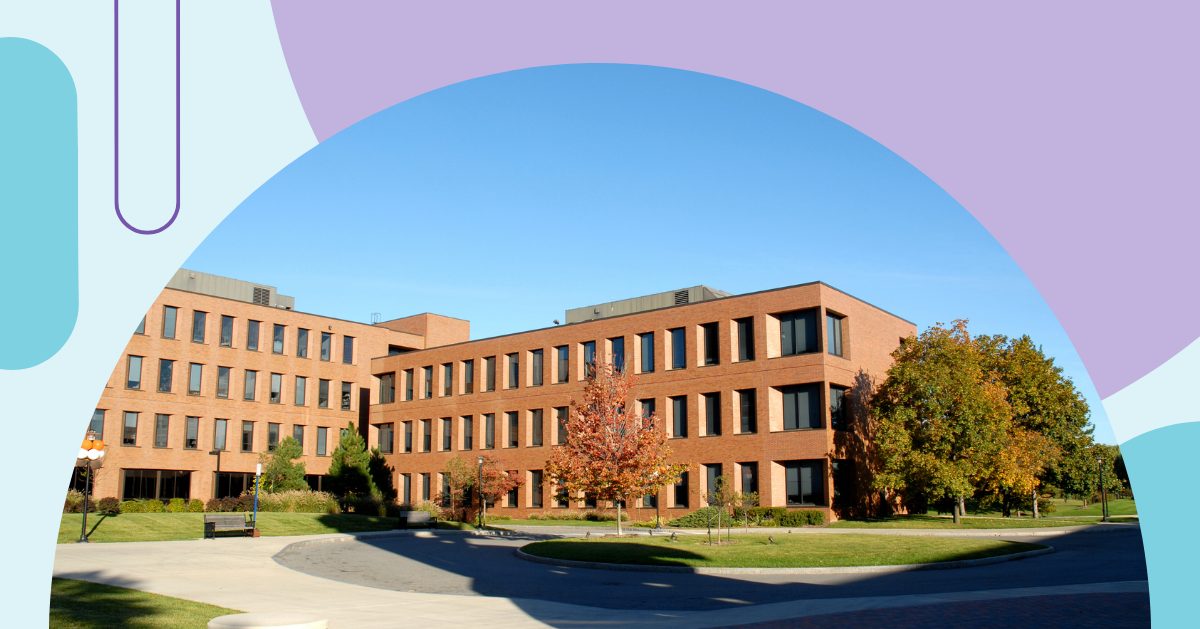
Transfer pathways are structured routes that help students move from technical programs to four-year higher education institutions. These pathways are designed to make the transition easier by clearly outlining which technical courses and credits will transfer and how they fit into a bachelor’s degree program.
For example, if a student completes a technical degree in information technology at a community institution, a transfer pathway ensures their credits will count toward a bachelor’s degree in computer science.
If you have students who aspire to transfer but worry about the obstacles they may face, consider our strategies for streamlining transfer pathways between technical and four-year programs.
Why technical students transfer into four-year programs
Students who transfer from two-year to four-year institutions account for 41.7 percent of transfer enrollments. Technical students often seek to transfer to four-year programs for several reasons:
- Pursuit of higher education goals: Many technical students start their education with the intention of earning a bachelor’s degree. While technical programs provide a solid foundation, transferring between schools allows them to achieve their ultimate educational aspirations and gain access to a wider range of majors and advanced coursework.
- Cost effectiveness: Starting at a community or technical institution is often a more affordable option. Students can save significantly on tuition and fees during their first two years compared to attending a four-year higher education institution from the start. This financial advantage is particularly appealing to students from low-income backgrounds.
- Improved transfer opportunities: Many four-year institutions have expanded their transfer programs to offer guaranteed admission to students who meet specific criteria. Some campuses have programs that allow technical students to transfer as juniors, often with higher acceptance rates than first-time freshmen.
- Personal and academic growth: Some students need more time after high school before they’re ready for a four-year program. Technical institutions often provide a supportive environment with smaller class sizes and more personalized attention from instructors. Following a technical program allows students to mature academically and personally.
- Flexibility and convenience: Community and technical institutions often provide flexible schedules that accommodate students balancing work, family, and education. This flexibility can be crucial for adult learners or those with other commitments.
- Changing educational and labor market conditions: As students adjust their educational goals in response to evolving job market demands, transferring to a four-year institution can provide them with the qualifications needed for better job opportunities and career advancement.
Overview of transfer agreements
Technical institution transfer agreements are formal arrangements between educational institutions that facilitate the transfer of credits and courses from one institution to another. They are designed to streamline the transfer process for students from technical programs to four-year institutions. Various types of these agreements exist to aid transfer student success between technical and four-year institutions.
1. Articulation agreements
These formal agreements specify which courses will transfer and how they will apply to a degree program at the receiving institution. They help ensure students receive credit for courses taken at one institution when they transfer to another. Some examples include:
- Course-to-course agreements, which detail how individual courses match up between institutions.
- Program-to-program agreements, which align two-year programs with comparable four-year programs.
Students following articulation pathways find clarity on credit transfers, and they save time and money by eliminating the need to retake courses. However, articulation agreements can be complex to negotiate and implement, so it’s up to institutions to collaborate with one another.
2. Block transfer agreements
Block transfers allow students to transfer a block of courses without evaluating each course individually. For example, a student who completes an associate degree in a technical field can transfer all credits as a block to a four-year institution to fulfill the general education requirements. This simplifies the transfer process for students looking for smoother academic progression.
3. Transfer pathway programs
Transfer pathway programs outline a clear sequence of courses for students to follow at a technical institution before transferring to a four-year institution. They provide a roadmap for students to ensure they take the right courses to meet transfer requirements.
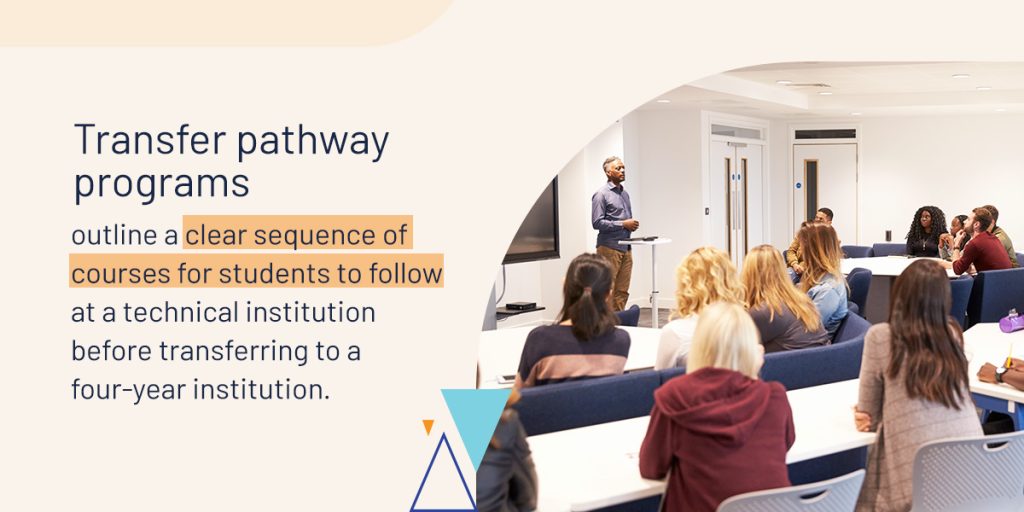
4. Guaranteed admission agreements
These agreements guarantee admission to students who meet specific criteria, such as maintaining a certain GPA or completing designated coursework. For example, a technical institution may have a guaranteed admission agreement with another institution that allows students who complete their associate degrees with a minimum GPA to be admitted as juniors to four-year courses.
Tips for streamlining transfers to four-year schools
As a technical institution administrator or decision-maker, you can use these strategies to streamline transfers of students to four-year institutions:
- Develop clear articulation agreements: Establish comprehensive articulation agreements that clearly outline which courses transfer and how they apply to degree programs. Regularly review and update these agreements to reflect changes in curricula and program requirements so they remain relevant.
- Enhance communication: Provide dedicated transfer advisors who can guide students through the transfer process, answer questions, and help them navigate different requirements. You can also host workshops and information sessions to educate students about transfer options and timelines.
- Implement technology solutions: Use online tools that allow students to see how their credits will transfer to different institutions to simplify their decision-making process. Implement data tracking systems to monitor student progress and identify potential barriers to transfer to give proactive support.
- Foster collaboration between institutions: Create joint programs or pathways that allow students to transition from technical institutions to four-year programs. Find ways to align curricula and ensure courses are equivalent to facilitate smoother credit transfers.
- Provide support services: Offer tutoring, mentoring, and academic support services to help students succeed in their courses before transferring to reduce the likelihood of “transfer shock.” Additionally, provide information on financial aid options, scholarships, and resources available to transfer students to help them navigate financial concerns.
- Focus on student engagement: Gather feedback from students about their transfer experiences to identify areas for improvement, and make necessary adjustments to support services.
- Monitor and evaluate outcomes: Regularly monitor transfer rates and student success metrics to assess the effectiveness of transfer pathways and make data-driven decisions for improvement. Use this data to inform strategies and improve transfer processes and support services.
Support technical student transfers with Watermark
By implementing these strategies, you can create a more efficient and supportive transfer process for students. You will enhance student success and retention while strengthening institutional partnerships. Using platforms that enhance data-driven decision-making can improve educational outcomes for everyone.
The Watermark Educational Impact Suite (EIS) centralizes data from various sources so you can track student progress, transfer rates, and success metrics. The analytics and reporting tools on the EIS help educational leaders make informed decisions about transfer agreements and articulation models, helping streamline the transfer process for students. This platform also facilitates collaboration among faculty, advisors, and administrators so everyone is aligned in supporting students through transfer processes.
Request a demo to see how the EIS can help you.
